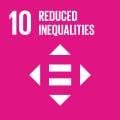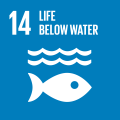Worldwide consumption and production – a driving force of the global economy – rest on the use of the natural environment and resources in a way that continues to have destructive impacts on the planet.
Economic and social progress over the last century has been accompanied by environmental degradation that is endangering the very systems on which our future development – indeed, our very survival – depends.
If people worldwide switched to energy efficient light bulbs the world would save US$120 billion annually.
Should the global population reach 9.6 billion by 2050, the equivalent of almost three planets could be required to provide the natural resources needed to sustain current lifestyles.
Sustainable consumption and production is about doing more and better with less. It is also about decoupling economic growth from environmental degradation, increasing resource efficiency and promoting sustainable lifestyles.
Sustainable consumption and production can also contribute substantially to poverty alleviation and the transition towards low-carbon and green economies.


































Facts & Figures
According to latest projections, the global population could grow to around 8.5 billion in 2030, 9.7 billion in 2050. The equivalent of almost three planets could be required to provide the natural resources needed to sustain current lifestyles.
93 per cent of the world’s 250 largest companies are now reporting on sustainability.
Less than 3 per cent of the world’s water is fresh (drinkable), of which 2.5 per cent is frozen in the Antarctica, Arctic and glaciers. Humanity must therefore rely on 0.5 per cent for all of man’s ecosystem’s and freshwater needs.
Humankind is polluting water in rivers and lakes faster than nature can recycle and purify
More than 1 billion people still do not have access to fresh water.
Excessive use of water contributes to the global water stress.
Water is free from nature, but the infrastructure needed to deliver it is expensive.
Water use has been increasing worldwide by about 1per cent per year since the 1980s.
Agriculture (including irrigation, livestock and aquaculture) is by far the largest water consumer, accounting for 69per cent of annual water withdrawals globally. Industry (including power generation) accounts for 19per cent and households for 12per cent.
Over 2 billion people live in countries experiencing high water stress.
Over the period 1995–2015, floods accounted for 43per cent of all documented natural disasters, affecting 2.3 billion people, killing 157,000 more and causing US$662 billion in damage.
Three out of ten people (2.1 billion people, or 29per cent of the global population) did not use a safely managed drinking water service4 in 2015, whereas 844 million people still lacked even a basic drinking water service.
If people worldwide switched to energy efficient lightbulbs, the world would save US$120 billion annually.
Despite technological advances that have promoted energy e ciency gains, energy use in OECD countries will continue to grow another 35 per cent by 2020. Commercial and residential energy use is the second most rapidly growing area of global energy use after transport.
In 2002 the motor vehicle stock in OECD countries was 550 million vehicles (75 per cent of which were personal cars). A 32 per cent increase in vehicle ownership is expected by 2020. At the same time, motor vehicle kilometers are projected to increase by 40 per cent and global air travel is projected to triple in the same period.
Households consume 29 per cent of global energy and consequently contribute to 21 per cent of resultant CO2 emissions.
The share of renewable energy in final energy consumption has reached 17.5per cent in 2015.
The global electrification rate reached 89per cent in 2017 (from 83per cent in 2010), still leaving about 840 million people without access
Between 2010 and 2017, the percentage of the population relying on clean cooking solutions grew by an annual average of 0.5 percentage points.
The global population without access to electricity fell from 1.2 billion in 2010 to 840 million in 2017.
Each year, an estimated 1/3 of all food produced – equivalent to 1.3 billion tons worth around $1 trillion – ends up rotting in the bins of consumers and retailers, or spoiling due to poor transportation and harvesting practices
38 million children under the age of 5 were overweight or obese in 2019.
Land degradation, declining soil fertility, unsustainable water use, overfishing and marine environment degradation are all lessening the ability of the natural resource base to supply food.
The food sector accounts for around 30 per cent of the world’s total energy consumption and accounts for around 22 per cent of total Greenhouse Gas emissions.
Links
Want to know more about
Sustainable Development?
Simply fill out your email and message and one of our agents will get back to you.
